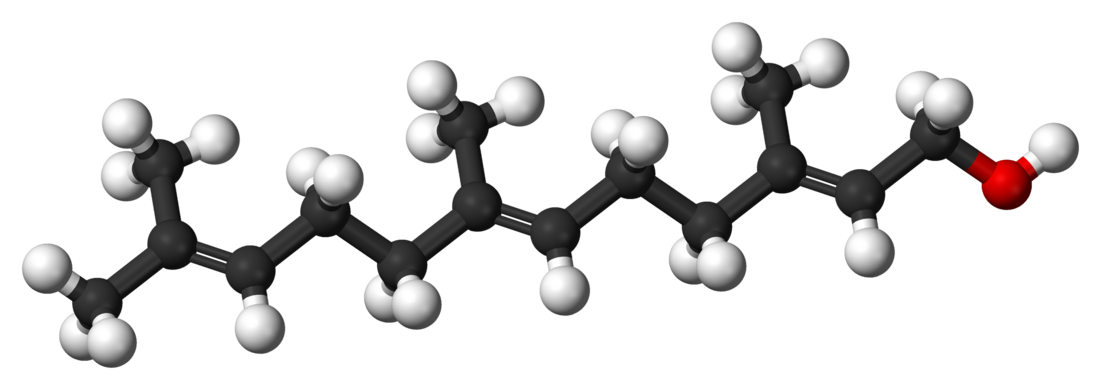Top Qs
Timeline
Chat
Perspective
Farnesol
Chemical compound From Wikipedia, the free encyclopedia
Remove ads
Farnesol is a natural 15-carbon organic compound which is an acyclic sesquiterpene alcohol. Under standard conditions, it is a colorless liquid. It is hydrophobic, and thus insoluble in water, but miscible with oils. As the pyrophosphate ester, farnesol is a precursor to many terpenes and terpenoids.[1] It is a constitutional isomer of Nerolidol.
Remove ads
Uses
Farnesol is present in many essential oils such as citronella, neroli, cyclamen, lemon grass, tuberose, rose, musk, balsam, and tolu. It is used in perfumery to emphasize the odors of sweet, floral perfumes. It enhances perfume scent by acting as a co-solvent that regulates the volatility of the odorants. It is especially used in lilac and peony perfumes.[2] Farnesol and its ester derivatives are important precursors for a variety of other compounds used as fragrances and vitamins.[1]
Cosmetics
Farnesol is used as a deodorant in cosmetic products.[3] Farnesol is subject to restrictions on its use in perfumery, because some people may become sensitised to it.[4]
Remove ads
Natural source and synthesis
In nature
The pyrophosphate ester of farnesol is the building blocks of possibly all acyclic sesquiterpenoids. These compounds are doubled to form 30-carbon squalene, which is the precursor for steroids in plants, animals, and fungi.[1]
Farnesyl pyrophosphate is produced from the reaction of geranyl pyrophosphate and isopentenyl pyrophosphate. Farnesyl pyrophosphate is the precursor to farnesol and farnesene.
Farnesol is used by the fungus Candida albicans as a quorum sensing molecule that inhibits filamentation.[5]
Commercial production
Obtaining farnesol from natural sources is uneconomical. In industry, farnesol is produced from linalool.[1]

Conversion of geranylacetone to nerolidol, which can be isomerized to farnesol.
Remove ads
History of the name
Farnesol was named (ca. 1900–1905) after the Farnese acacia tree (Vachellia farnesiana), since the flowers from the tree were the commercial source of the floral essence in which the chemical was identified. This particular acacia species, in turn, is named after Cardinal Odoardo Farnese (1573–1626) of the Italian Farnese family who (from 1550 though the 17th century) maintained some of the first private European botanical gardens in the Farnese Gardens in Rome. The addition of the -ol suffix implies an alcohol.[6] The plant itself was brought to the Farnese gardens from the Caribbean and Central America, where it originates.[7]
See also
References
Wikiwand - on
Seamless Wikipedia browsing. On steroids.
Remove ads




